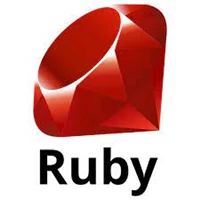ノーコードでクラウド上のデータとの連携を実現。
詳細はこちら →Bullhorn CRM ODBC Driver の30日間無償トライアルをダウンロード
30日間の無償トライアルへ製品の詳細
Bullhorn CRM ODBC Driver を使って、ODBC 接続をサポートするあらゆるアプリケーション・ツールからBullhorn CRM にデータ連携。
Bullhorn CRM データにデータベースと同感覚でアクセスして、Bullhorn CRM のCandidates、Resumes、Searches データに使い慣れたODBC インターフェースで双方向連携。

CData


こんにちは!ドライバー周りのヘルプドキュメントを担当している古川です。
CData ODBC Driver for BullhornCRM を使うと、簡単にRuby アプリケーションにリアルタイムBullhorn CRM データを連携・統合できます。 この記事では、Bullhorn CRM データにリアルタイムに連携するRuby アプリケーションを構築して、クエリを実行し、結果を表示してみます。
CData ODBC ドライバは、以下のような特徴を持ったリアルタイムデータ連携ソリューションです。
CData ODBC ドライバでは、1.データソースとしてBullhorn CRM の接続を設定、2.Ruby 側でODBC Driver との接続を設定、という2つのステップだけでデータソースに接続できます。以下に具体的な設定手順を説明します。
まずは、本記事右側のサイドバーからBullhornCRM ODBC Driver の無償トライアルをダウンロード・インストールしてください。30日間無償で、製品版の全機能が使用できます。
通常はCData ODBC ドライバのインストール後にODBC DSN 接続ウィザードが立ち上がり、設定を行うことができます。 もしODBC DSN 接続が未済の場合には、Microsoft ODBC データソースアドミニストレータでODBC DSN を作成および設定することができます。
Bullhorn CRM に接続するには、Bullhorn CRM アカウントの資格情報を入力します。また、DataCenterCode プロパティをデータセンターに対応するデータセンターコードに設定してください。詳しくは、こちら を参照してください。
CLS2、CLS21 などのコードはクラスタID で、ログインした際のブラウザのURL(アドレスバー)に含まれます。
例えば、
https://cls21.bullhornstaffing.com/BullhornSTAFFING/MainFrame.jsp?#no-baこちらのURL は、ログインしたユーザーがCLS21 クラスタに存在することを示しています。
ちなみに、コールバックURL の末尾に"/" を含む値、例えば http://localhost:33333/ を指定する場合は、アプリケーション設定で指定したコールバックURL と厳密に同じ値を指定する必要があります。このパラメータの文字が一致しない場合、エラーとなります。
Bullhorn CRM ではOAuth 2.0 認証標準を利用できます。 OAuth を使用して認証するには、すべてのシナリオでカスタムOAuth アプリケーションを作成して設定する必要があります。詳しい認証方法については、ヘルプドキュメントの「OAuth」セクションを参照してください。
Ruby をまだインストールしていない場合は、Ruby インストールページを参考にインストールしてください。 Ruby をインストールしたら、次にruby-dbi、dbd-odbc、ruby-odbc gems をインストールします。
gem install dbi
gem install dbd-odbc
gem install ruby-odbc
Ruby ファイル (例: BullhornCRMSelect.rb) を作成し、テキストエディタで開きます。ファイルに次のコードをコピーします:
#connect to the DSN
require 'DBI'
cnxn = DBI.connect('DBI:ODBC:CData BullhornCRM Source','','')
#execute a SELECT query and store the result set
resultSet = cnxn.execute("SELECT Id, CandidateName FROM Candidate WHERE CandidateName = '山田太郎'")
#display the names of the columns
resultSet.column_names.each do |name|
print name, "\t"
end
puts
#display the results
while row = resultSet.fetch do
(0..resultSet.column_names.size - 1).each do |n|
print row[n], "\t"
end
puts
end
resultSet.finish
#close the connection
cnxn.disconnect if cnxn
これで、Ruby からBullhorn CRM データへ接続できるようになります。簡単にコマンドラインからファイルを叩いて接続を確認してみましょう。
ruby BullhornCRMSelect.rb
このようにCData ODBC ドライバと併用することで、270を超えるSaaS、NoSQL データをコーディングなしで扱うことができます。30日の無償評価版が利用できますので、ぜひ自社で使っているクラウドサービスやNoSQL と合わせて活用してみてください。
CData ODBC ドライバは日本のユーザー向けに、UI の日本語化、ドキュメントの日本語化、日本語でのテクニカルサポートを提供しています。
